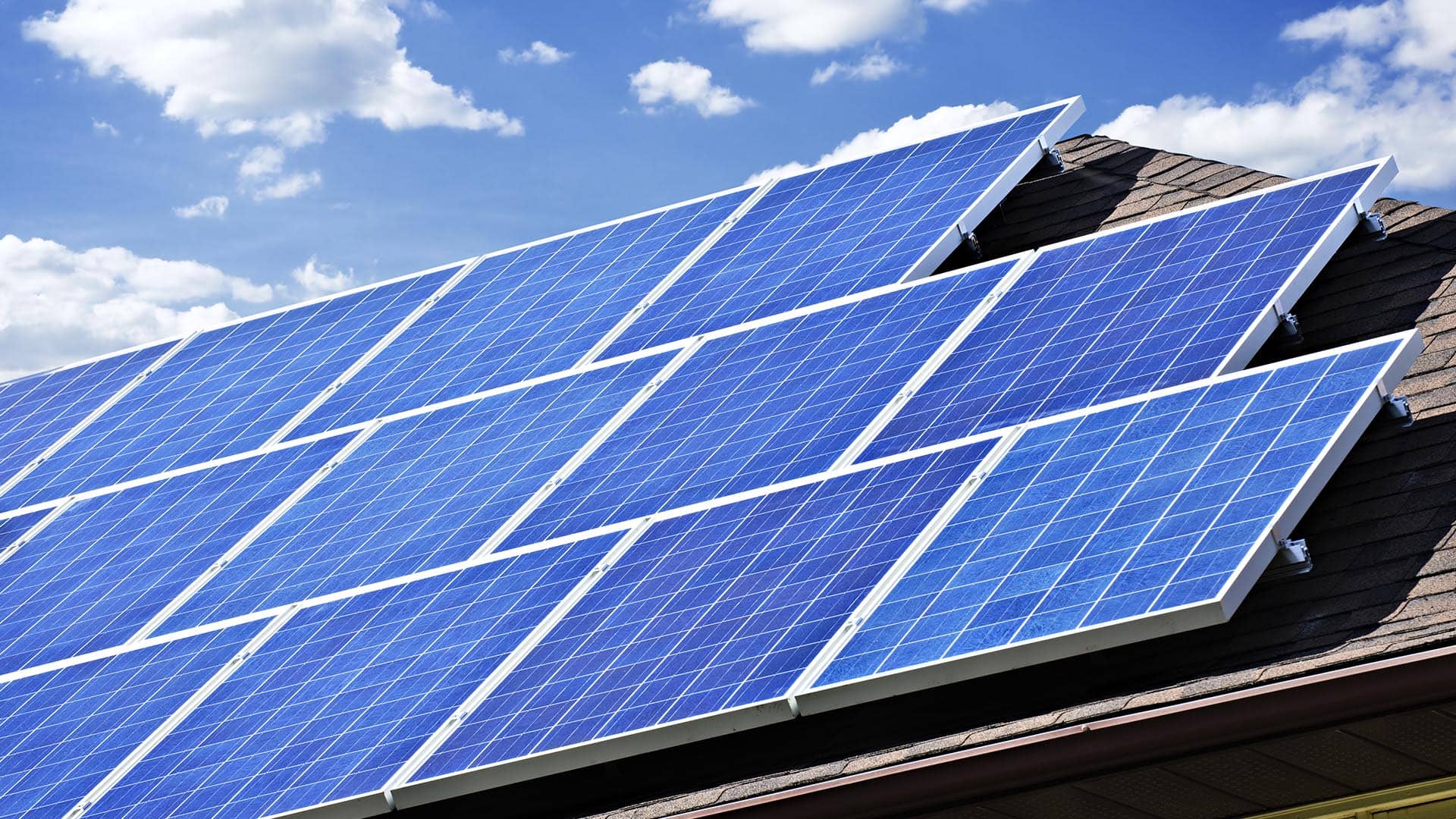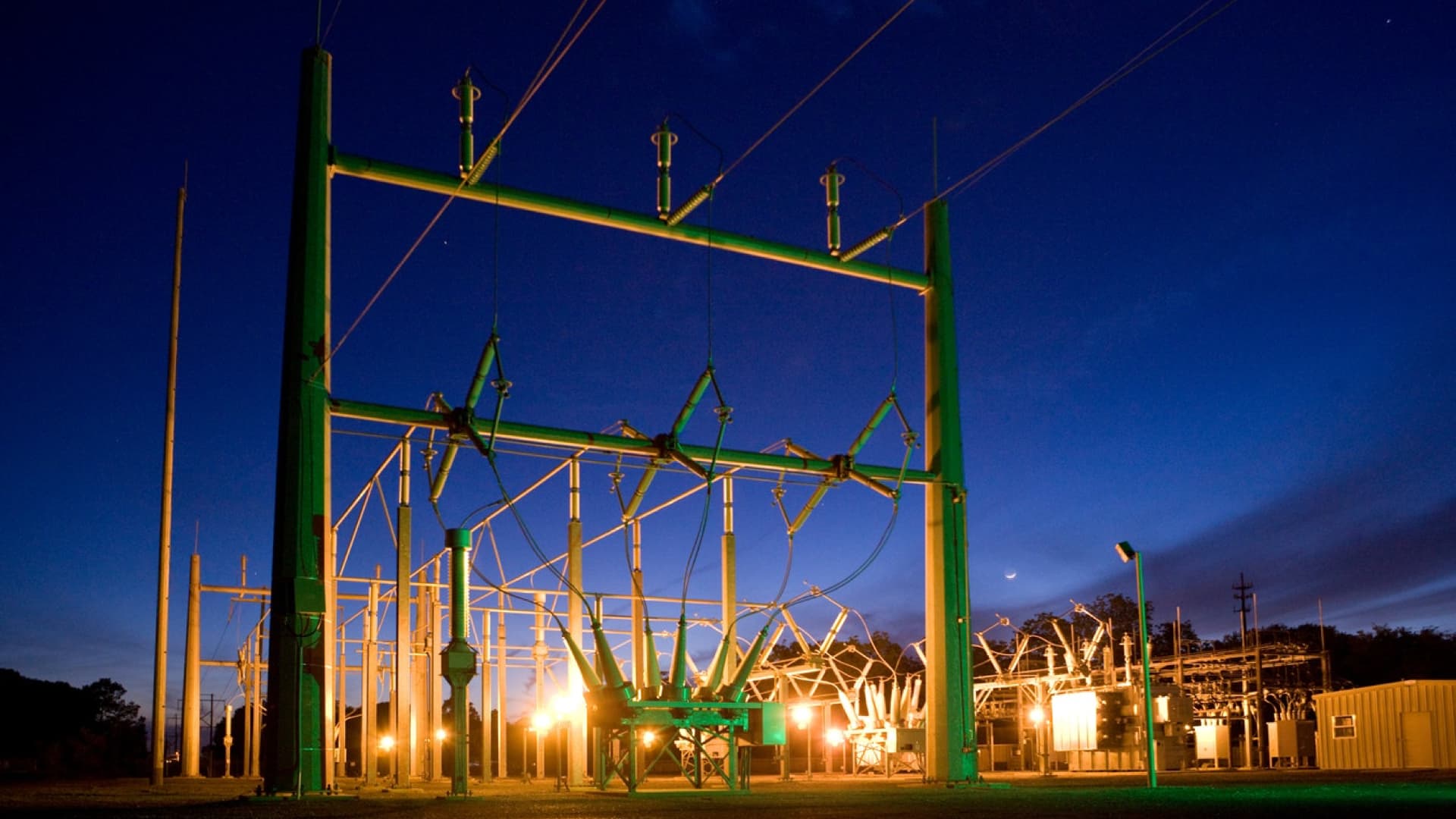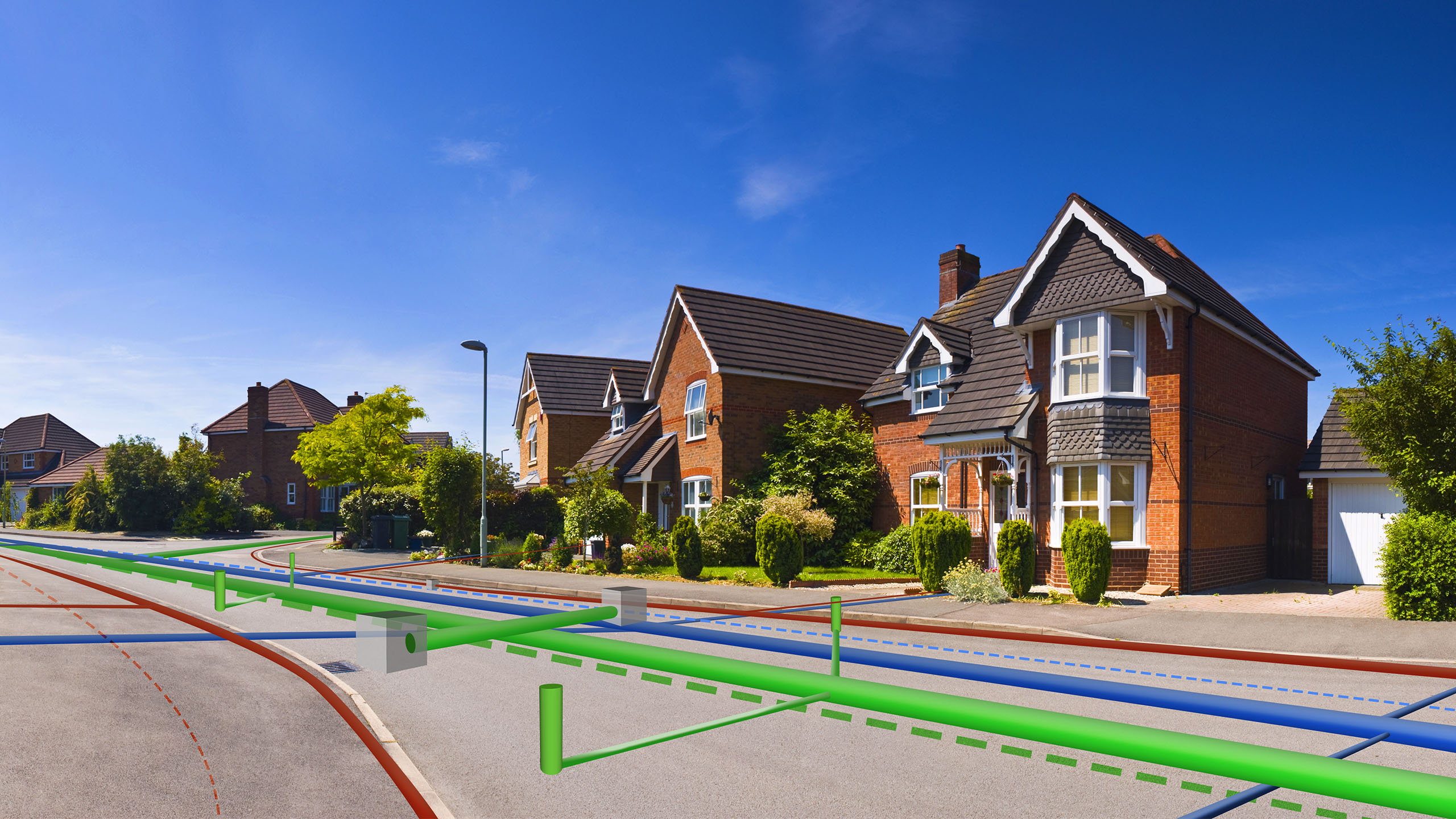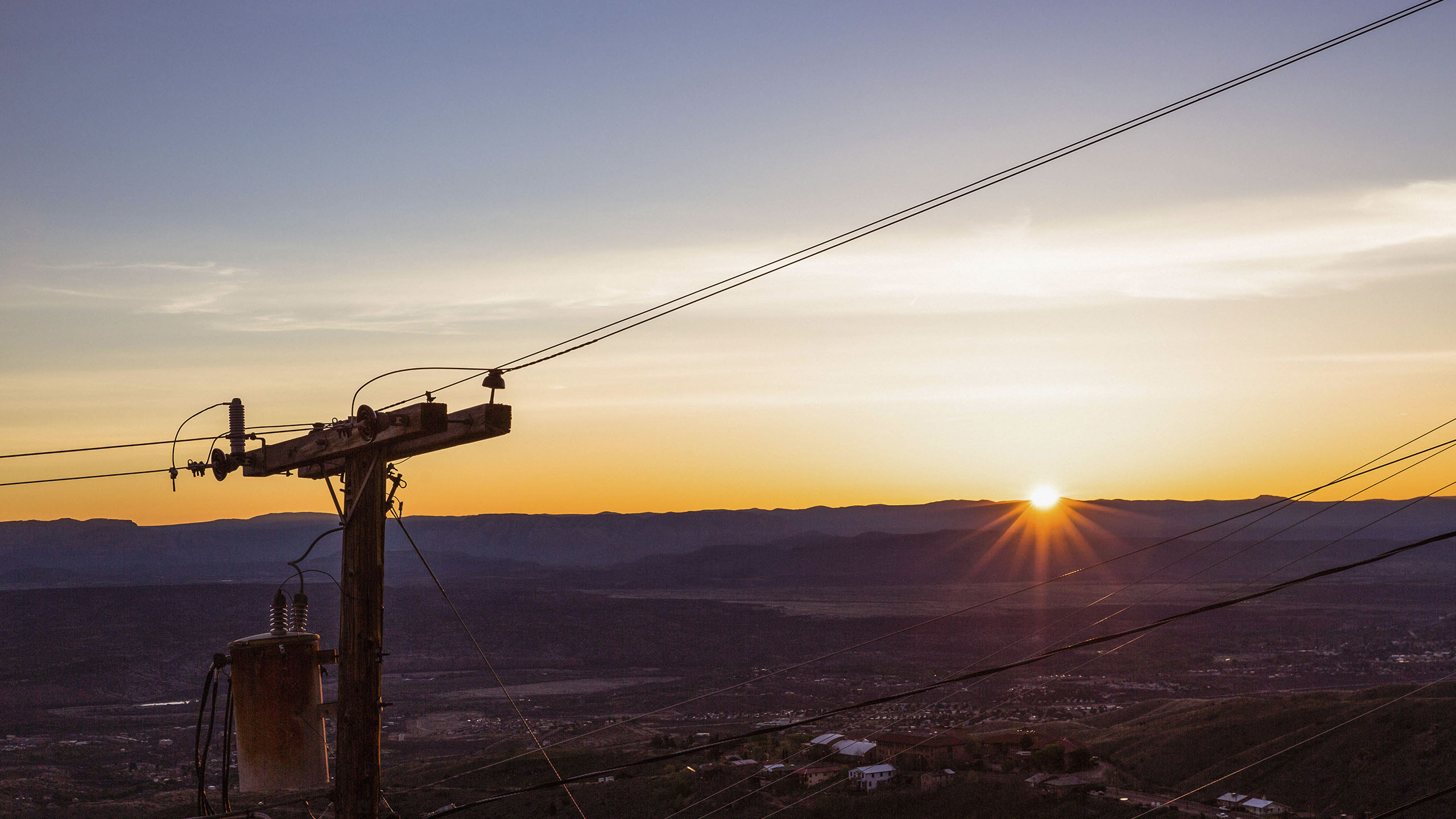As more consumers turn to solar and wind to supplement their energy needs and lower their costs, they are challenging and changing the traditional business model for utilities.
For decades, the prevailing model had a utility generating and distributing power on a grid that it owns and controls, charging consumers by their amount of usage. But today, energy consumers from homeowners to businesses to residential developments are using solar panels, wind turbines, and even geothermal sources to produce energy. Sometimes, they produce more electricity than they need or can store.
The amount of power generated by rooftop solar panels on US homes is expected to jump to 5.7 gigawatts in 2020, from 1.8 gigawatts in 2015, according to the World Economic Forum. Electricity generated by all renewable resources accounts for 17 percent of US electricity today. By 2050, wind and solar power alone are expected to account for 35 percent of the nation’s total.
Along with that increase comes a growing group of producers/consumers known as “prosumers.” Prosumers are already upsetting the balance of the traditional utility market by producing their own electricity and disrupting utility income streams. These scattered small and midsize power producers are also known as distributed energy resources (DERs).
The rise of prosumers and renewable energy could positively impact climate change. At the same time it forces utilities to adapt by shifting their business models. Utilities must learn to lead in the new energy environment. To do this, many will use location intelligence from geographic information systems (GIS), a technology they’ve relied on for decades to map, manage, and analyze all aspects of their network.
Microgrids Transform the Energy Market
One example of a DER is a group of homeowners or businesses, or a college campus that creates a solar-based microgrid to generate a portion of its own power and sells any surplus electricity to retailers.

Already, solar power has turned part of traditional utility pricing on its head. For years, many power providers have tried to change consumer habits by charging more for electricity at peak hours such as the hottest time of day. The intention is for consumers to ease up on air conditioning and hold off on dishes or laundry until the cooler evening hours when electricity demand diminishes. But for DERs that use solar, production is highest during the hottest part of the day, reducing the need for energy from a traditional utility. Although it can take several years for a homeowner to recoup an investment in a solar power system, the price of technology and installation continues to fall.
It can be hard for leaders of a utility to shape a new mission statement that recognizes the changing marketplace and opens vital new economic paths. But timing is crucial. Companies that quickly transform business models before feeling the effects of decreased or lower-than-predicted revenue can create value that’s seven times higher than companies that move sluggishly or fail to make significant adjustments, according to Boston Consulting Group.
(Listen to this podcast for a deeper exploration of digital transformation in the utility industry.)
The Power Grid Starts to Act Like the Internet
The DER market is not yet mature. In fact, it resembles an earlier age of computing, when the use of personal computers soared and the Internet created new business relationships and communications networks. PCs disrupted the old model of a single mainframe computer as the source of all computing power for a company. As personal computers became self-contained computing units, the mainframe lost its traditional market.
But as the Internet and cloud computing emerged, the model changed again, into a hybrid of personal computing power with access to wider networks.
Internet providers found that the key to success was not just in selling the content that flows through the pipes. Success, instead, stemmed from selling connections to the pipes—the vital access without which people and businesses couldn’t exchange messages or conduct transactions.
As the energy market reshapes itself today, all those scattered, small producers of energy—the homeowners with solar panels and the businesses with wind turbines—are much like early personal computers. Smart utility executives will offer new services to these prosumers. Some utilities may sell access to the grid and even help neighborhoods with solar panels and other sources of distributed energy form a microgrid.

The new business model, while still being developed, can use GIS technology and access to the grid to determine where prosumers are creating more energy than they need and where else and to whom it might be sold.
While utilities try to stimulate and harness DERs, some may divest of power generation altogether (some already have) and hold onto the transmission and distribution lines—their version of the Internet. Others may become retailers that buy and sell power but don’t own lines or the means of generating electricity.
In this new environment, utilities will need to know the locations of DERs, how much energy they are capable of producing, and how much they may need. GIS—the technology that, for decades, has helped utilities map their assets—can assist in the process. Utilities will use GIS to map DERs and provide real-time data on power production and energy needs. Much of that information will come from the IoT-connected sensors that utilities are adding to the grid.
Whether a utility decides to broker the buying and selling of electricity on the grid or to become a hybrid that generates and sells power and helps microgrids buy and sell, its executives will thrive in the changing marketplace by minding the three Cs: communication, collaboration, and coordination.
Communication: The Power Grid as Information Transmission
With IoT-connected data sensors communicating across power networks, providers can identify peak demands and unexpected usage trends, and locate prosumers who have excess power that could be bought, sold, and redistributed.
Managing this kind of data communication is possible with the help of a technology that utilities have traditionally used to locate assets such as transmission lines, substations, vehicles, and service personnel. Now that same GIS can pinpoint the location of customers, prosumers, and microgrids and monitor fluctuations in consumption and production within those networks. With sensors, GIS can even track the health of every solar panel or storage system at a house or business.

Faced with a quickly changing market dynamic in which prosumers turn to solar power to save money and seek to sell their excess, utilities must learn how to disrupt their own business model to remain successful.
GIS can also run ongoing analysis, monitoring power consumption over time along with local weather patterns to predict future usage and needs.
As the IoT improves data communication, utilities can leverage GIS for vital information about all aspects of the power grid.
Collaboration: Individuals, Microgrids, and Major Providers
Consumers, producers, distributors, and prosumers must collaborate to meet their individual energy needs. Even as battery storage improves, it will be difficult for an individual or microgrid to generate and store enough power to be self-sufficient. Prosumers will see value in paying to connect to the major power grid and assure an uninterrupted supply of electricity that keeps homes and business running when storms or clouds obscure the sun, or when other renewable sources aren’t available.
There will be days or weeks when storage batteries are fully charged and solar panels produce surplus electricity that can be sold for profit and used to support peak demands or urgent needs. Transmitting surplus energy to places in need of power will keep commerce from being disrupted and reduce equipment problems caused by blackouts or brownouts.
Collaboration among multiple parties in the utility network, including DERs, can be facilitated by GIS. User-friendly visual displays and real-time mapping will give everyone involved a view of changing energy demands and resources. The utility that owns the grid then becomes the broker between those with surplus and those with needs.
In Vermont, a community of modular homes fitted with solar panels and storage capabilities was able to save money for its residents and the local utility. With strong collaboration and communication, the utility draws on charged solar batteries in homes to create a virtual power plant that kicks in during periods of high demand. Solar panels and batteries lessened the community’s need to take energy from the grid during peak periods and created a savings of $200,000.
Utilities can set connection fees based on the amount of power needed, the amount produced and sent to the grid, the number of times a home or business needs to connect, or the total sales by an individual or entity. With more retailers packaging energy and with DERs buying and selling, the connection to the grid—and the collaboration possible through GIS—becomes ever more valuable. Collaboration also means that utilities can serve as brokers and take a commission on each transaction.
While the market is still developing, utilities may find that the growth of microgrids and distributed energy resources offers opportunities to save money. More microgrids means less demand on the central power plant and fewer investments in capital improvements. For example, if a storm knocks down transmission lines, many microgrids would likely continue operating, which means the utility can dispatch fewer service personnel to deal with emergency repairs.
Coordination: Planning on a Wider Scale
A utility needs to know what’s going on with prosumers as well as large systems such as government entities and businesses that could affect power availability.
Coordination refers to the ability to plan in conjunction with other large-scale operations—including planning and responding to long-term trends and real-time situations. A utility needs to know about development plans and predicted growth patterns of cities, neighborhoods, business parks, and shopping or entertainment districts. Much of that information resides at city and county zoning and planning departments. Those plans and proposals often affect decisions about where to expand the power grid or how to manage energy resources.
GIS can act as a shared repository of that information, allowing all parties to see plans and coordinate responses. When done in harmony, the results can be like that of a community of 2,900 homes being built in Arizona that will generate much of its own power through solar. The community can leave or join the local utility grid as needed. When the local utility sells power at a lower rate, the community will buy it as needed to keep batteries fully charged.
For long-term planning, GIS can provide insight on population trends and residential patterns or changes at street level. A utility, for instance, does not want to dig up streets to maintain its assets right after the city repaves the roadway. A shared GIS database helps both sides coordinate work.
Coordination also happens in real time by sharing information with emergency management departments. Utilities will learn of potential power disruptions due to natural disasters or accidents. By consulting GIS, the utility or retail energy provider can locate impacted transmission lines and substations to see which consumers will be affected by an outage. They can share information with emergency services providers and coordinate the best course of action.
The Future
Distributed energy resources and the prosumers associated with them continue to grow in number. Financial analysts predict that microgrids’ share of the market will increase by 19 percent between 2017 and 2024, when it will be worth $19 billion. As the energy market changes, utilities will explore many business models. Traditional utilities will have to monetize connections to the grid instead of simply selling power as a commodity.
Utilities will look to consumer demographics and growth patterns—data visible with GIS—to predict future needs. Analytics based on GIS will also help providers customize offerings for residents with solar panels and those who prefer to buy renewable energy.
If today’s power provider doesn’t learn to harness location intelligence from GIS to serve the changing needs of prosumers, then other innovative businesses certainly will.
The Esri Brief
Trending insights from WhereNext and other leading publicationsTrending articles

December 5, 2024 |

July 25, 2023 |

November 12, 2018 |

February 1, 2022 |

July 29, 2025 |

July 14, 2025 |





